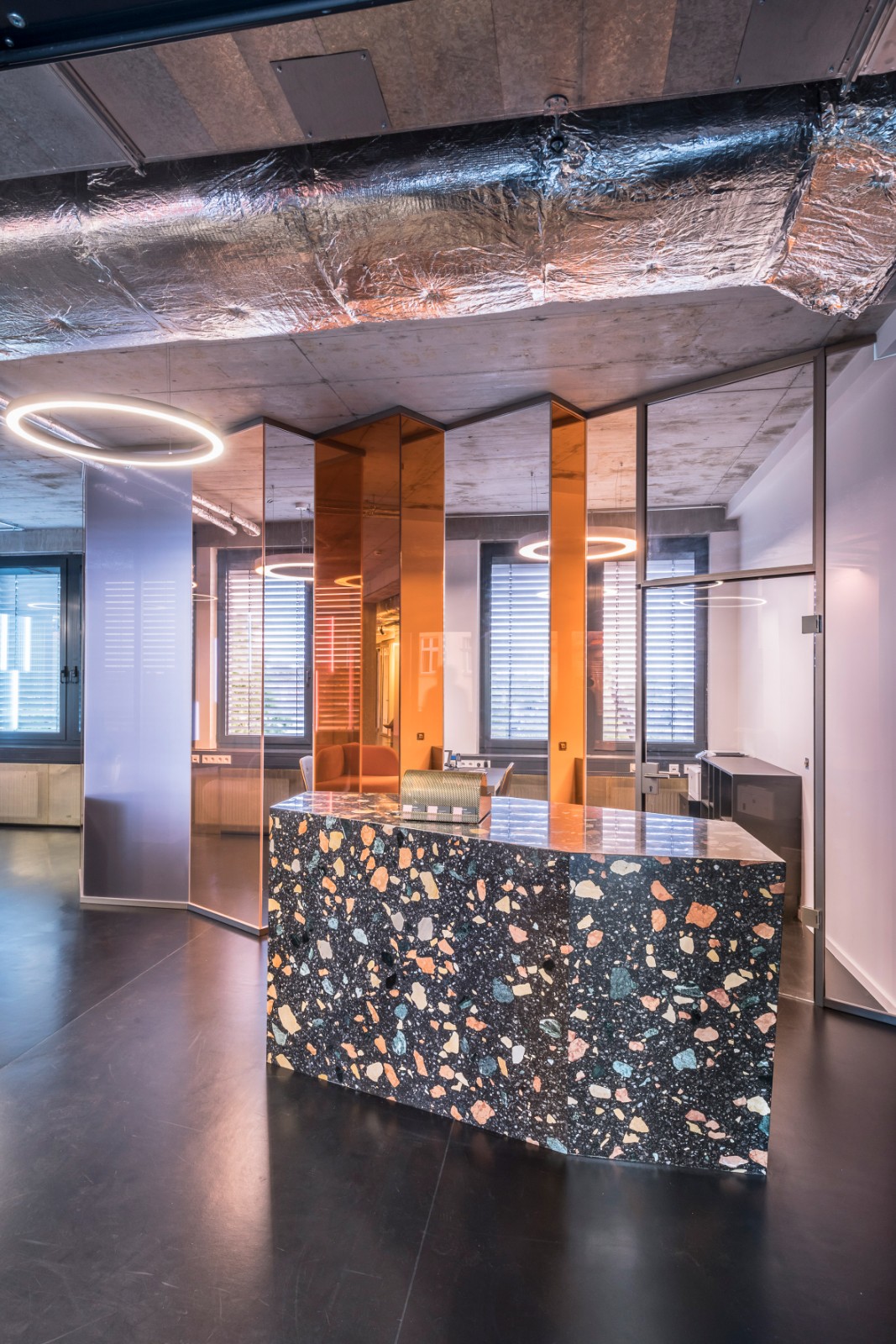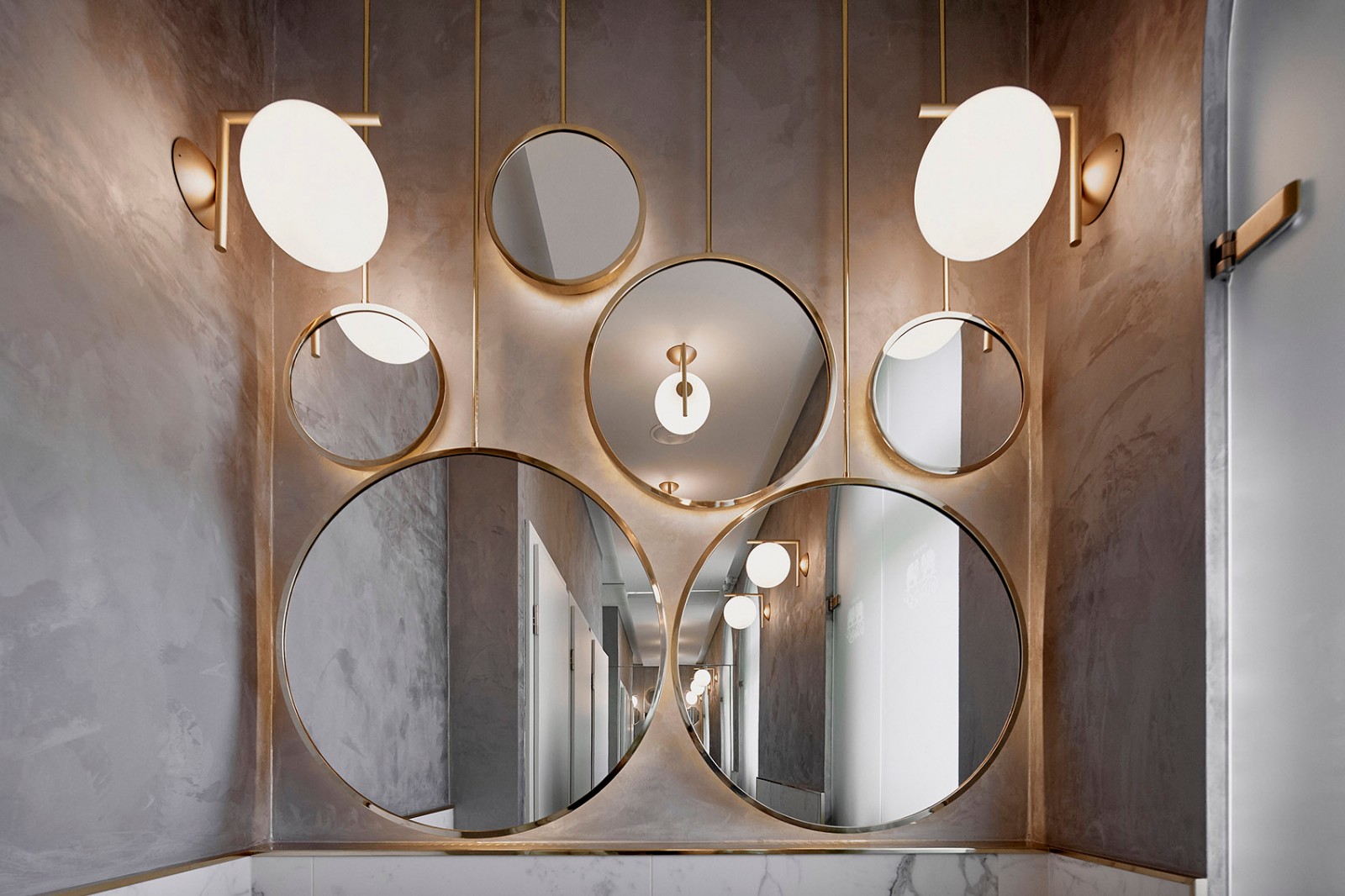Glanhof 1 Architects Collective
2015-11-15 02:00
Courtesy of Architects Collective
建筑师集体礼


架构师提供的文本描述。当前环境下的建筑
Text description provided by the architects. Architecture under Current
格兰霍夫是一座多层住宅综合体,在奥地利克拉根福中心有150个单元。它以其位于Glan河上的位置和围绕一个绿色和阳光充足的庭院的三座建筑结构而得名。在第一阶段,沿着皮瑟道弗街建造了一座延伸很长的建筑,它可以通过一个带有独特不规则锯齿形几何立面的通道阳台到达,它集成了数百个光伏元件。50-75平米大小的补贴别墅的特色是15平方米的大阳台面向庭院。这个几乎自给自足的项目的能源概念的一部分是地热卤水储藏室,它在阳光充足的几个月从光伏系统储存多余的太阳能。
The Glanhof is a multi-story housing complex with 150 units in the center of Klagenfurt, Austria. It is named for its location on the Glan River and the arrangement of three building structures surrounding a green and sunny courtyard. In the first phase, a long-stretched structure was built along the Pischeldorfer street, which can be reached via an access balcony with a unique irregular zig-zag geometric facade that integrates hundreds of photovoltaic elements. The 50 - 75 m2 sized subsidized aartments feature up to 15 m2 large balconies oriented to the courtyard. Part of the energy concept of the virtually self-sufficient project is the geothermal brine reservoir that stores excess solar energy from the photovoltaic system during sunny months.
Courtesy of Architects Collective
建筑师集体礼


太阳几何学
Solar geometry
光伏系统一直被忽视,而且在不久以前还经常被发现隐藏在屋顶上,然后成为建筑的组成部分。建筑师集体公司为Glanhof 1开发的太阳能设计将光伏电池板集成到沿街的玻璃外墙上,使其成为一种节能的、同时又可替代传统外墙元素的资源节约的替代品。它们以其优雅的外观,相同的功能,但创造了额外的好处,使建筑实际上能源自主。
Photovoltaic systems have been neglected and could often still be found hidden on the roof not too long ago before becoming an integral part of architecture. The solar design for Glanhof 1 developed by Architects Collective integrates the photovoltaic panels into the glass facade along the street making it an energy-efficient and at the same time resource-saving alternative to conventional façade elements. They fulfill with their elegant appearance, the same functions, but create an additional benefit by making the building virtually energy autonomous.


这座延长了很长时间的建筑,有53套公寓,漂浮在一层全玻璃的底层,其中包括咖啡馆、面包车和自行车停车场等公共区域,是一个包括公共空间在内的多代会面点。同时,这个基地区将沿街道的绿色庭院和操场隔开,那里是通往地下室的行人和停车场的入口。居民们从街道和车库走上四层住宅,穿过两层厚厚的玻璃楼梯,来到一个开放的阳台上。
The long-stretched building, with 53 apartments floats on top of the fully-glassed ground floor that features common areas such as a café, buggies and bicycle parking, is a multi-generational-meeting- point including common spaces. At the same time, this base zone separates the green courtyard and the playground along the street where the entrance for the pedestrian and parking garage into the basement are located. From the street and the garage the inhabitants walk the four residential floors over two generous glazed staircases into an open access balcony.
Courtesy of Architects Collective
建筑师集体礼


世世代代的会议空间
Meeting space for generations
Glanhof 1的住宅组合包括有子女的家庭、单亲家庭、单身家庭和老年人。这个项目是与希尔夫沃克·卡恩滕(?)一起构思的。满足了老一辈人的要求,同时也把年轻人带入了住宅综合体。在第一阶段,为协助生活建造了16个单元,面积为50平方米,配备了24小时紧急呼叫系统。他们通过电梯进一步连接,允许在老年人中心的医院病床和一楼的会议室。
The residential mix of Glanhof 1 consists of families with children, single parents, singles and the elderly. The project was conceived together with Hilfswerk Kärnten (?) and meets the requirements of the older generation and at the same time brings younger people into the housing complex. In the first phase, 16 units with 50 m2 were built for assisted living, which are equipped with a 24 hour emergency call system. They are further connected by an elevator that allows hospital beds in the senior citizens center and the meeting room on the ground floor.
Floor Plan


几乎能源自主
Almost energy-autonomous
光伏模块是住宅综合体整体能源概念的一部分。大部分热水和供暖是由屋顶上的太阳能电池板系统、热泵系统和地热储藏室产生的。光伏元件也直接与热泵相连,大大提高了系统的整体效率。在阳光明媚的几个月里,过剩的太阳能供应并储存在地热卤水库中。然后,这种能量在较冷的月份释放出来,并锁定在热泵系统中,并可用于供暖。热泵只需要一小部分电能,而较高温度的地区供暖则需要一小部分能源,以支持外部供应商的水加热。
The photovoltaic modules are part of the overall energy concept of the housing complex. Most of the hot water and heating is produced by a system of solar panels on the roof, a heat pump system and a geothermal reservoir. The photovoltaic elements are also connected directly to the heat pump and significantly increase the overall efficiency of the system. Excess solar energy is supplied and stored into a geothermal brine reservoir during the sunny months. This energy is then is released during colder month and latched into the heat pump system and made usable for heating. Only a small proportion of energy is required in the form of electricity for the heat pump and district heating for higher temperatures to support the water heating by external providers.
Courtesy of Architects Collective
建筑师集体礼






















































Architects Architects Collective
Location Pischeldorfer Str. 53, 9020 Klagenfurt am Wörthersee, Austria
Category Apartments
Team Richard Klinger, David Lieser, Martin Schorn, David Selensky
Area 5900.0 sqm
Project Year 2015
























